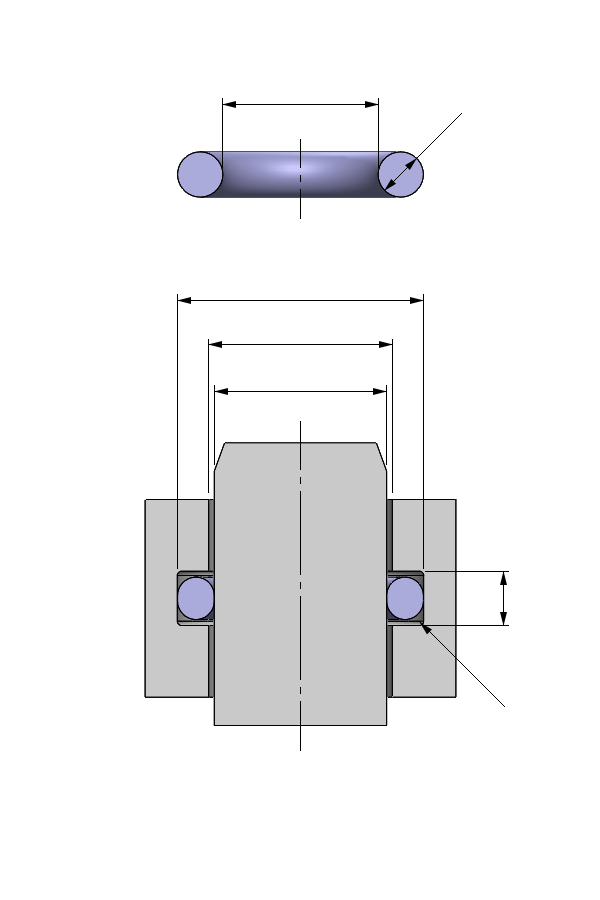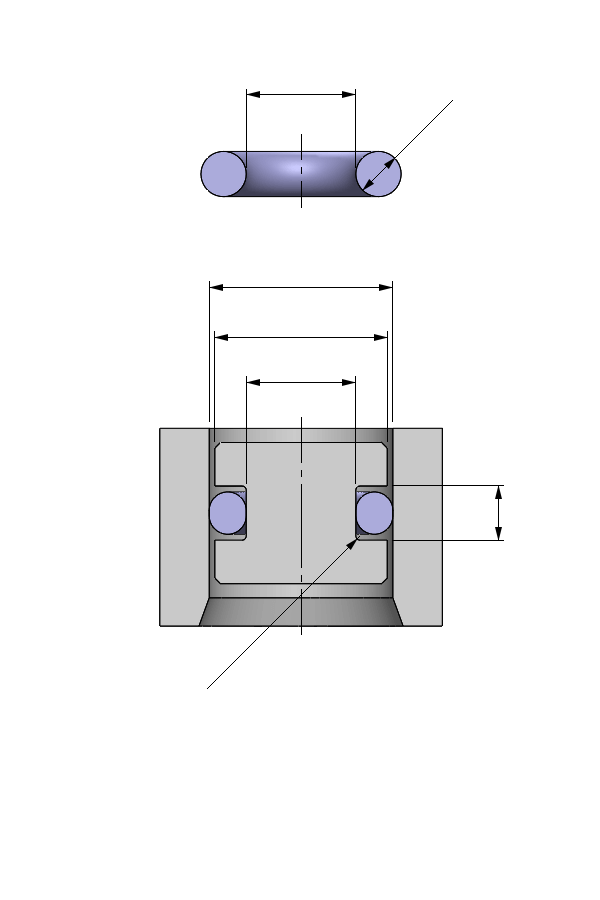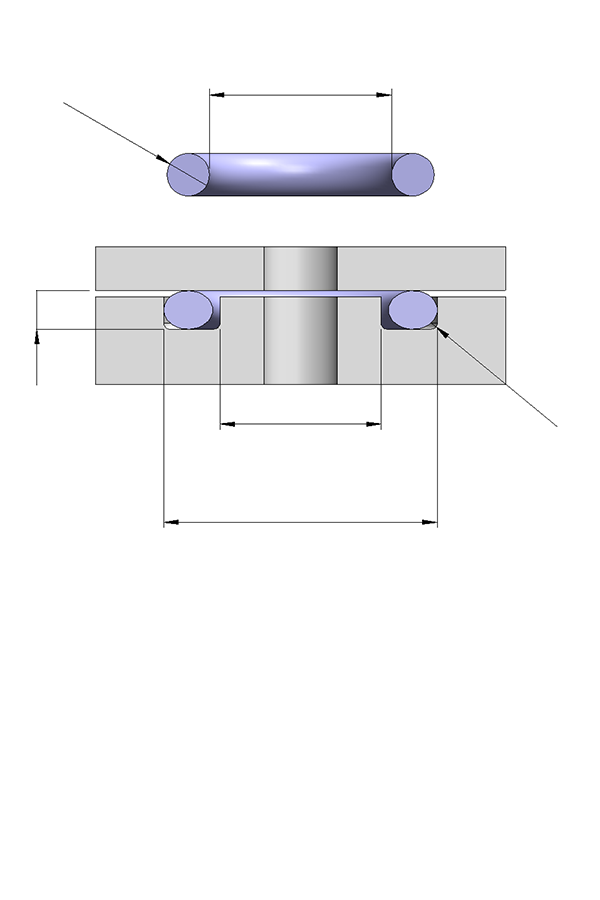The O-ring calculator tool is intended to form the basis of an O-ring installation, and assist with selection of O-ring and hardware dimensions. Recommendations are based on available technical information, and are offered as suggestions only, any reliance placed on such information by the user is strictly at the user’s risk. Ceetak recommends that any guidance provided, is reviewed and verified to the satisfaction of the user against the application parameters. Ceetak Ltd offers no express or implied warranties concerning the form, fit or function of a product in any application, and recommends that the customer conducts testing to confirm the suitability of any suggested product within their own application.
Squeeze %
Optimum range of compression is typically 8% to 35%. For dynamic seals, the upper limit of squeeze should be reduced to 20%. For FFKM O-rings, a range of 12% to 18% is recommended.
For optimum sealing performance with gas applications, the higher end of the squeeze range may be required. Conversely, for applications sealing viscous oils and greases, good sealing performance can be achieved with squeeze levels at the lower end of the range. Application conditions such as temperature, pressure and hardware surface finish will affect the sealing performance. For applications using small diameter and/or small cross section O-rings, it may not be possible to fully satisfy all recommendations and the full application conditions should be considered to determine the most suitable balance of parameters.
Housing Fill %
Housing fill should not exceed 85% to allow for expansion of material due to thermal and chemical effects.
For applications at modest temperatures and/or where it is known that the seal material will not swell as a result of exposure to the fluids in the application, higher housing fill is permissible, but it should never exceed 95%.
Elongation on Installation %
Installed stretch should be below 8%
Installed stretch should be >0% to minimise the risk of assembly difficulties.
Compression Outside
Circumferential compression above 3% may result in installation difficulties.
Eccentric Squeeze %
Compression in an eccentric condition should meet the same requirements as Squeeze detailed above.
Eccentric squeeze is derived from the calculated hardware clearance. Factors such as the use of internal bearing/guide rings and external hardware alignment and/or force application should be taken into account when considering the relevance of Eccentric Squeeze in the specific application. Seal compression forces will attempt to centralise hardware, but this may not always be sufficient to overcome external forces.

Squeeze %
Optimum range of compression is typically 8% to 35%. For dynamic seals, the upper limit of squeeze should be reduced to 20%. For FFKM O-rings, a range of 12% to 18% is recommended.
For optimum sealing performance with gas applications, the higher end of the squeeze range may be required. Conversely, for applications sealing viscous oils and greases, good sealing performance can be achieved with squeeze levels at the lower end of the range. Application conditions such as temperature, pressure and hardware surface finish will affect the sealing performance. For applications using small diameter and/or small cross section O-rings, it may not be possible to fully satisfy all recommendations and the full application conditions should be considered to determine the most suitable balance of parameters.
Housing Fill %
Housing fill should not exceed 85% to allow for expansion of material due to thermal and chemical effects.
For applications at modest temperatures and/or where it is known that the seal material will not swell as a result of exposure to the fluids in the application, higher housing fill is permissible, but it should never exceed 95%.
Elongation on Installation %
Installed stretch should be below 8%
Installed stretch should be >0% to minimise the risk of assembly difficulties.
Compression Outside
Circumferential compression above 3% may result in installation difficulties.
Eccentric Squeeze %
Compression in an eccentric condition should meet the same requirements as Squeeze detailed above.
Eccentric squeeze is derived from the calculated hardware clearance. Factors such as the use of internal bearing/guide rings and external hardware alignment and/or force application should be taken into account when considering the relevance of Eccentric Squeeze in the specific application. Seal compression forces will attempt to centralise hardware, but this may not always be sufficient to overcome external forces.

Squeeze %
Optimum range of compression is typically 8% to 35%. For dynamic seals, the upper limit of squeeze should be reduced to 20%. For FFKM O-rings, a range of 12% to 18% is recommended.
For optimum sealing performance with gas applications, the higher end of the squeeze range may be required. Conversely, for applications sealing viscous oils and greases, good sealing performance can be achieved with squeeze levels at the lower end of the range. Application conditions such as temperature, pressure and hardware surface finish will affect the sealing performance. For applications using small diameter and/or small cross section O-rings, it may not be possible to fully satisfy all recommendations and the full application conditions should be considered to determine the most suitable balance of parameters.
Housing Fill %
Housing fill should not exceed 85% to allow for expansion of material due to thermal and chemical effects.
For applications at modest temperatures and/or where it is known that the seal material will not swell as a result of exposure to the fluids in the application, higher housing fill is permissible, but it should never exceed 95%.
Elongation on Installation %
Installed stretch should be below 8%.
Compression Outside
Circumferential compression above 3% may result in installation difficulties.
